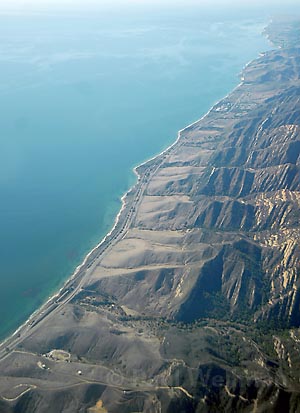Protecting Gaviota
Supes Make Plan for Preserving Undeveloped Region

There is perhaps no hotter potato in Santa Barbara County’s Planning and Development patch than the fabled Gaviota Coast: the swath east of Point Conception and west of Goleta’s urban limit line that accounts for roughly 50 percent of all undeveloped coastal land in Southern California.
Simultaneously a developer’s wet dream and worst nightmare, mention of Gaviota causes a guaranteed gathering of activists, enviros, land owners, and agriculturalists. So when the Santa Barbara County Board of Supervisors held a special hearing on August 18 specifically aimed at the multi-headed beast of Gaviota Coast preservation, the masses descended upon county chambers. Four hours and nearly 50 public speakers later, the supervisors not only had a fully fleshed picture of the current state of affairs but also a plan of attack.
By way of an emotional 3-2 vote, the supervisors instructed staff to report back in coming months on the cost of updating 25-year-old General Plan and Local Coastal Plan language as it pertains to the Gaviota Coast in hopes of better paving the road to preservation even as 112 new single-family homes, many of them large-scale luxury developments, seek approval in the region. “The answer is with us despite how contentious it has been with all the interest groups,” explained 1st District Supervisor Salud Carbajal. “We would be remiss not to start taking some serious steps forward.”
It has been five years since the National Park Service was swiftly and uncompromisingly shown the door by the folks who call the Gaviota Coast home. The federal government’s preliminary efforts at turning it into a park system was given the boot by indignant residents. However, despite hours of meetings and debate on the subject by all parties involved, the rubber has never met the road regarding permanent, across-the-board protection. The tireless work of two stakeholder groups-a county-sanctioned body known as the Common Ground Working Group and a privately organized entity of environmental, agricultural, and development heavy hitters known as the Gaviota Coast Study Group-survived years of contentious, bitter, late night compromise sessions only to have their final conclusions never released for public consumption.
While Common Ground was considered by many to have had at least some success, it was the efforts of the Study Group-an all-star line-up of Gaviota powerbrokers, including Mark Lloyd, Jim Poett (husband of Independent editor-in-chief Marianne Partridge), Jose Baer, Dr. Mike McGinnis, Kim Kimball, and Monty Parsons-that held the most promise as it succeeded in finding glimmers of compromise between factions that historically loathe one another. Unfortunately, despite the Study Group’s report being released in late 2005, the Board of Supervisors refused to acknowledge the 44-page document’s existence until this week. Actually introduced as part of county staff’s presentation on Monday, the document was heralded by Carbajal as well as 2nd District Supervisor Janet Wolf and, to a lesser degree, 5th District Supervisor Joe Centeno, as the perfect jumping-off point for the board’s future discussion on Gaviota preservation.
In fact, the document’s underlying message-to revisit General Plan and Coastal Plan policies as they relate to Gaviota and reaffirm agriculture as a top priority-was exactly what a majority of the supervisors opened the door to this week. As Poett told the supes, “By creating that process, you would bring all the stakeholders to the forefront : Time is running out.”
Besides asking for a financial breakdown of what a Gaviota-focused General Plan update would look like, supervisors also asked staff this week to explore tools for protecting open space as well as the funding sources that make these acquisitions possible. With groups like the Trust for Public Land and the Land Trust for Santa Barbara County already responsible for the permanent protection of more than 7,500 acres in Gaviota, the supes deemed vital the value of the county working hand-in-hand with such organizations.
There was no date set for the matter to return to the board, though it was widely speculated that staff would not report back until 2009.



